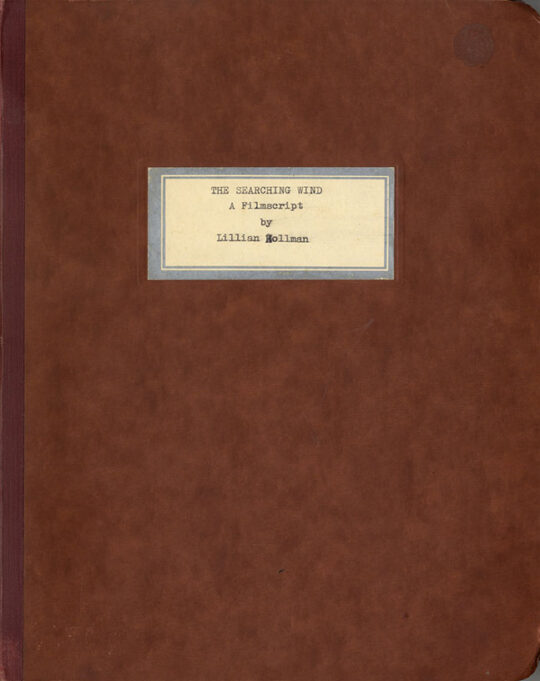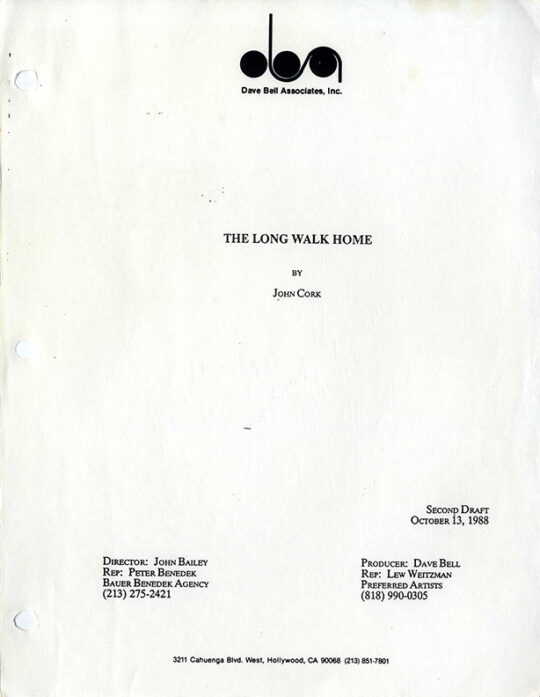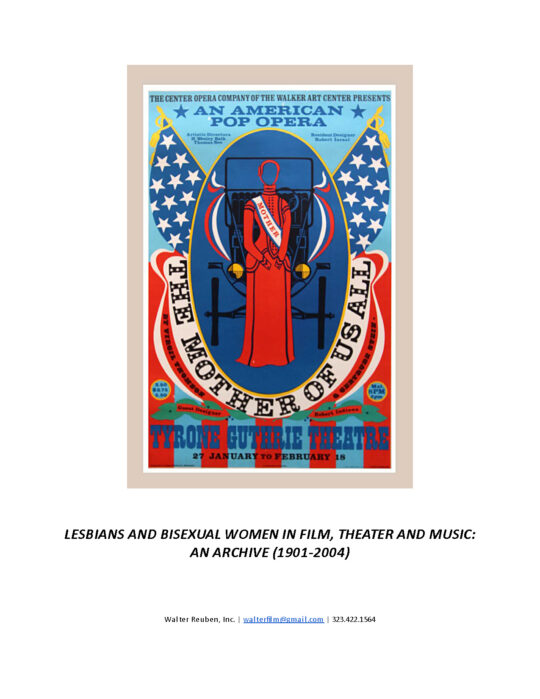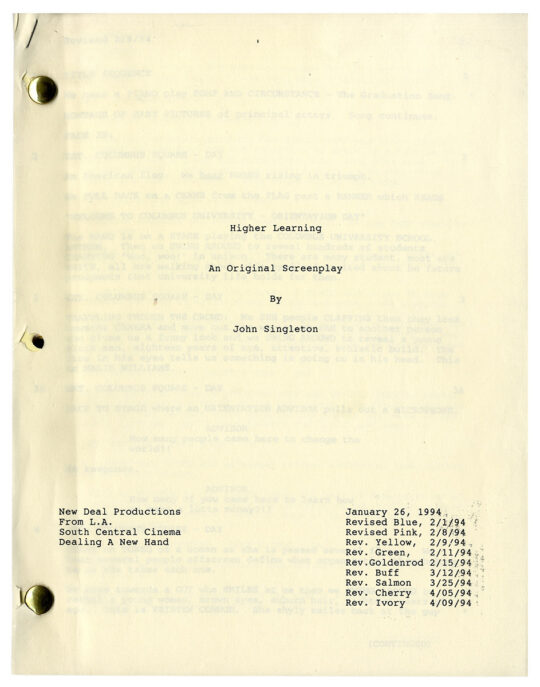Alain Resnais (director) MON ONCLE D’AMÉRIQUE [MY AMERICAN UNCLE] (1979) French film script
[Paris, 1979]. Vintage original French screenplay, 11 x 8″ (28 x 20 cm.), printed production company wrappers, 100+ pp. Wrappers lightly smudged. Many pages have actual 35mm clips from the film on verso, illustrating the specific shots designated in the script (some of these have come loose). The script was presented to legendary French cinematographer Sacha Vierny by Arthur Cloquet, who was his assistant cameraman.
Mon oncle d’Amérique is a classic of French cinema — and one of only a handful of foreign-language films to be Oscar-nominated as of 1980. Besides its nomination for Best Original Screenplay, it received many other plaudits, including the 1980 winner for Best Foreign Film from the New York Film Critics Circle and the Grand Jury Prize at Cannes.
Alain Resnais (1922-2014), along with Jean-Luc Godard, was considered one of the most formally innovative filmmakers of the French New Wave. Resnais’ first three features — Hiroshima mon amour (1959), Last Year at Marienbad (1961) and Muriel (1963) — employed the full vocabulary of cinema, particularly montage, to redefine the way movies treated the themes of time and memory and had a revolutionary effect on the way those themes were treated in movies generally thereafter. Mon oncle d’Amérique is no less revolutionary, formally speaking. It’s a film that blends essay and narrative, starting with the lectures of real-life theoretical psychologist and biologist Henri Laborit, and illustrating Laborit’s behavioral theories with the interweaving fictional stories of three characters: Jean (Roger Pierre) a would-be politician, Janine (Nicole Garcia) a would-be actress, and René (Gérard Depardieu) the son of a farmer who becomes an executive in a textile factory. The stories of the three leading characters are, in turn, intercut with film clips of three iconic French actors, Danielle Darrieux, Jean Marais and Jean Gabin, who helped to define the self-images of the three protagonists.
To write the narrative portions of his film, Resnais turned to veteran French screenwriter, Jean Gruault, whose other distinguished credits include Paris Belongs to Us (Jacques Rivette, 1960), Vanina Vanini (Roberto Rossellini, 1961), Jules et Jim (François Truffaut, 1962), La Religieuse (Rivette, 1966), Two English Girls (Truffaut, 1971) and The Story of Adèle H. (Truffaut, 1975).
To shoot the film, Resnais employed one of the world’s greatest cinematographers, Sacha Vierny, a long-time collaborator who had shot most of Resnais’ previous films including Hiroshima mon amour, Last Year at Marienbad and Muriel. This particular copy of the Mon oncle d’Amérique screenplay was formerly the property of Vierny, and includes physical film clips taped onto the back of many pages of the script to serve as color and lighting references.
Professor Laborit’s theories focus on four main types of animal behavior — consumption, escape, struggle, and inhibition — and he is particularly concerned with how an organism, human or otherwise, responds to crisis. Resnais illustrates Laborit’s theories not only with human behavior, but with clips of all kinds of animal life, ranging from sea anemones to crabs and tortoises. Sometimes Resnais’ illustrations have a surreal quality, as for example when we see performers interacting while wearing the heads of white rats.
Mon oncle d’Amérique is a thoroughly accomplished and entertaining work, and it is utterly singular. There has never been anything quite like it.
In stock
Related products
-

SEARCHING WIND, THE (Nov 7, 1946) Final White script by Lillian Hellman
$1,500.00 Add to cart -

LONG WALK HOME, THE (Oct 13, 1988) Second draft film script by John Cork
$375.00 Add to cart -

LESBIANS AND BISEXUAL WOMEN IN FILM, THEATER & MUSIC (1901-2004) Archive
$40,000.00 Add to cart -

John Singleton (writer, director) HIGHER LEARNING (Jan 26, 1994) Rainbow film script
$500.00 Add to cart

![MON ONCLE D'AMÉRIQUE [MY AMERICAN UNCLE] (1979) French screenplay](https://www.walterfilm.com/wp-content/uploads/2023/07/MonOncleDAmeriqueFR-SCR_a.jpg)
![MON ONCLE D'AMÉRIQUE [MY AMERICAN UNCLE] (1979) French screenplay](https://www.walterfilm.com/wp-content/uploads/2023/07/MonOncleDAmeriqueFR-SCR_b.jpg)
![MON ONCLE D'AMÉRIQUE [MY AMERICAN UNCLE] (1979) French screenplay](https://www.walterfilm.com/wp-content/uploads/2023/07/MonOncleDAmeriqueFR-SCR_c.jpg)
![MON ONCLE D'AMÉRIQUE [MY AMERICAN UNCLE] (1979) French screenplay](https://www.walterfilm.com/wp-content/uploads/2023/07/MonOncleDAmeriqueFR-SCR_d.jpg)
![MON ONCLE D'AMÉRIQUE [MY AMERICAN UNCLE] (1979) French screenplay](https://www.walterfilm.com/wp-content/uploads/2023/07/MonOncleDAmeriqueFR-SCR_e.jpg)